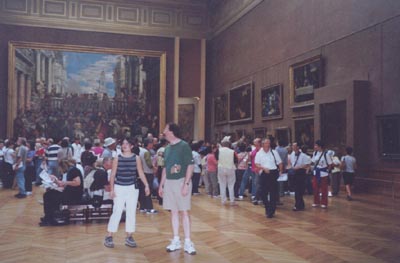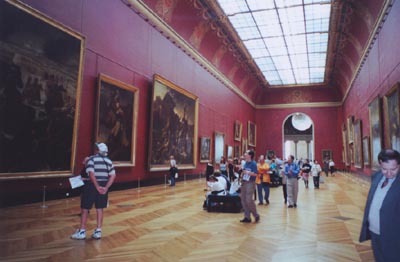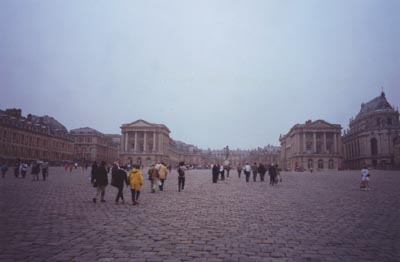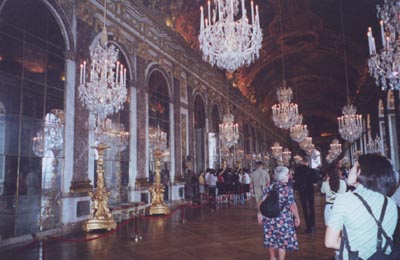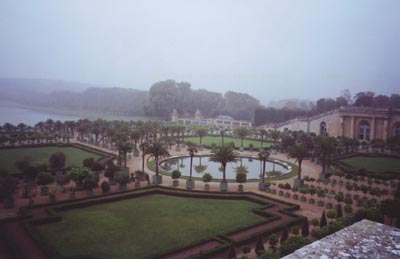


|
Art
a GoGo's Art Pilgrimage
There are many cities around the world that are famous for their art and attract thousands of travelers each year. No matter the city, legions of eager tourists trek through the streets of Europe and shuffle through endless museums in their quest for a cultural encounter. Recently, we joined the undaunted masses and visited two of these cities, Paris and Florence, as part of our own "art pilgrimage." Our arrival in Paris was certainly memorable: chaos in customs (entering the United States through Ellis Island must have been easier) and one of the infamous taxi drivers' strikes that caused a blockade around the city did not deter our enthusiasm. The most indispensable tool for any visitor to Paris is the carte musées-monuments (museum pass). Valid for 1, 3, or 5 days, this pass allows you to enter 70 museums and monuments with absolutely no waiting! The web site provides information about the pass and where it can be used. Also extremely useful is the Paris Visite pass that provides unlimited travel on the entire Paris transportation network that includes the metro, train, and bus. It's safe, fast, and literally the best way to get where you want to go. So, once you have your museum and transportation pass, where should you go? In terms of cathedrals, most tourists will converge at Notre Dame to the point that it might really interfere with your enjoyment. Notre Dame is worthy of a visit, but a far better choice is the Abbey Church of St. Denis. Located in the northern outskirts of Paris, but easily reached by the Metro, St. Denis is a relatively unexplored gem among the many sites in this city. Built during the 12th century by Abbot Suger, this is one of the earliest examples of a Gothic cathedral and is also the burial place of many of the kings and queens of France. Perhaps because this location is a little out of the way for most tourists, it is considerably less crowded and you can wander around for hours or just sit and savor the beautiful stillness of the cathedral space. Okay, so you are not a fan of French Gothic architecture-Paris has plenty of museums to visit. By far, the two most popular are the Louvre and the Musée d'Orsay. If you loathe crowds, brace yourself. Unless you travel during the off-season you can expect to rub shoulders with hordes of tourists from all over the globe at both of these museums. But the high quality of art available will make your patience and effort definitely worthwhile.
Musée du Louvre
If you haven't yet visited the Louvre, there is no doubt that you know someone who has. The one remark everyone seems to make about this crown jewel of museums is its massive size. Believe us, they are not exaggerating; this building is huge! Many tourists dash in and out to only take a brief look at Leonardo's "Mona Lisa." This is a big mistake because you need at least one full day to just scratch the surface of the treasure trove of art located here. Some suggestions about visiting the Louvre: 1. Make sure you pick
up a map at the visitor's Information Desk-you will definitely
need one to navigate your visit.
Musée d'Orsay
No doubt about it, the Musée d'Orsay is an Impressionists paradise. The museum, originally built in the 19th century as a railway station, is bright, airy, and spacious. Its permanent collection features art from the western world made during the years 1848-1914. Our recommendations: Jean-Baptiste Carpeaux's "The Dance," Edouard Manet's "Olympia," Auguste Renoir's "Dance at Le Moulin de la Galette," Gustave Courbet's "A Burial at Ornans."
Day Trip to Versailles
After looking at abundant numbers of painting and sculpture, you might be tempted to take a trip outside Paris to admire what unlimited control of power and money could do for a French King. Château de Versailles, built by Louis XIV in the 17th century, always draws flocks of tourists. Thinking that we would avoid the "tour trap," we decided to take a train from Paris to Versailles and spend time on our own exploring the château. With great disappointment we saw countless rows of tour buses parked on the grounds with swarms of tourists heading towards the main entrance.
The phrase "you can't swing a cat" comes to mind. It's hot, bodies are squished together like sardines, and the tour guides glare at us to move away from their groups-but there is nowhere to move to-it is completely packed in here! MEDIC! Finally, we break away from the crowds and head for our goal-the "Hall of Mirrors." Even though it is cloudy outside the degree of reflection on the mirrors from the weak sunlight that enters through the huge windows and overhead lights is truly magical.
A "must-see" at Versailles is the gardens. It was quite foggy on the day we visited so it was impossible to see as well as we would have on an otherwise sunny day, but it would be time well spent to visit the vast parkland here.
Moving On Eight days of running around Paris has left us both ready for a change of scene. After an interminable wait in a Paris train station watching the arrival and departure signs flip over (click, click, click…it's almost mesmerizing!), we are eager to take the overnight train from Paris to our next stop on our art pilgrimage: Florence. And that's a story that must wait until the next installment of the "Art Pilgrimage" series.
|
